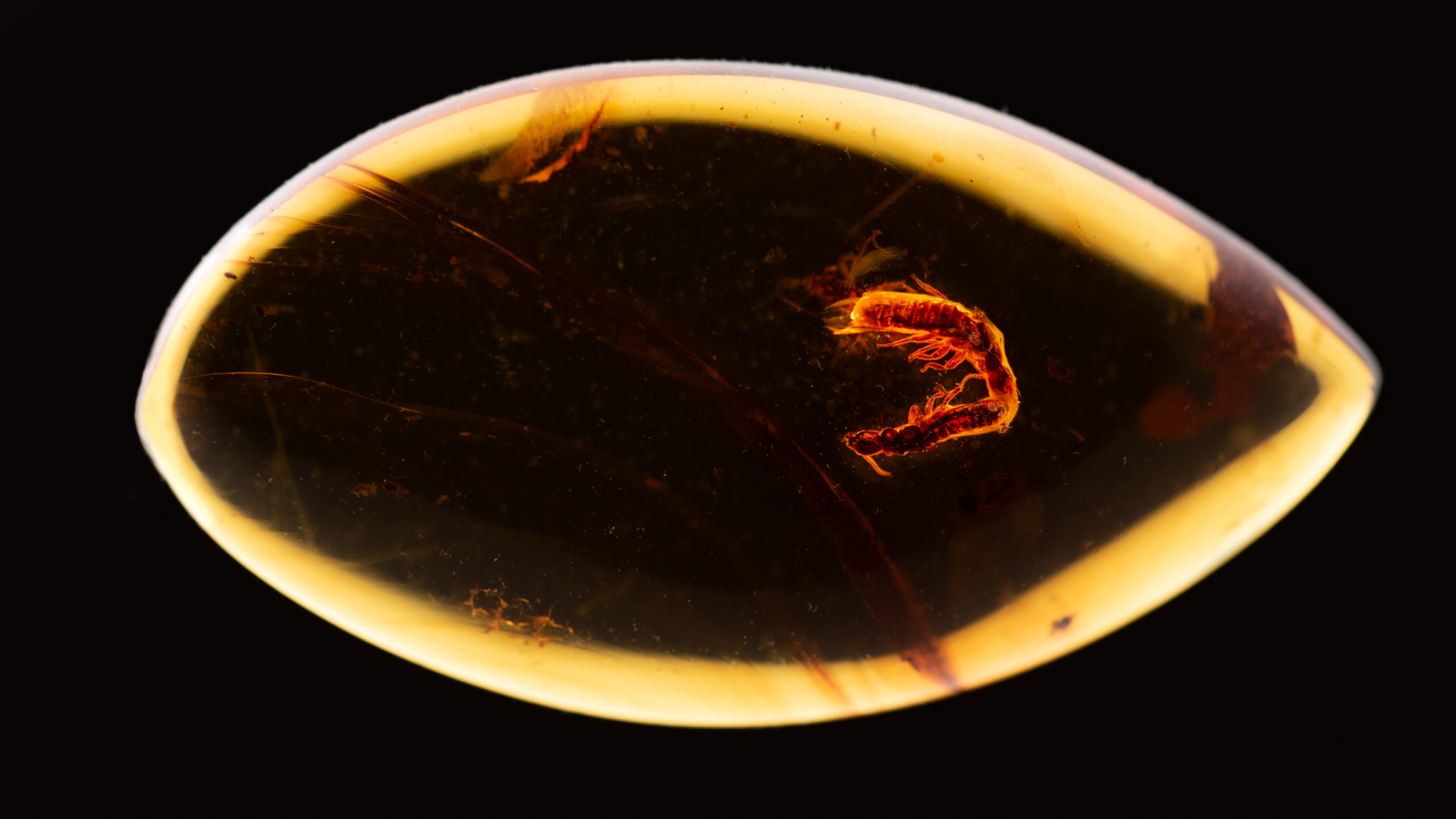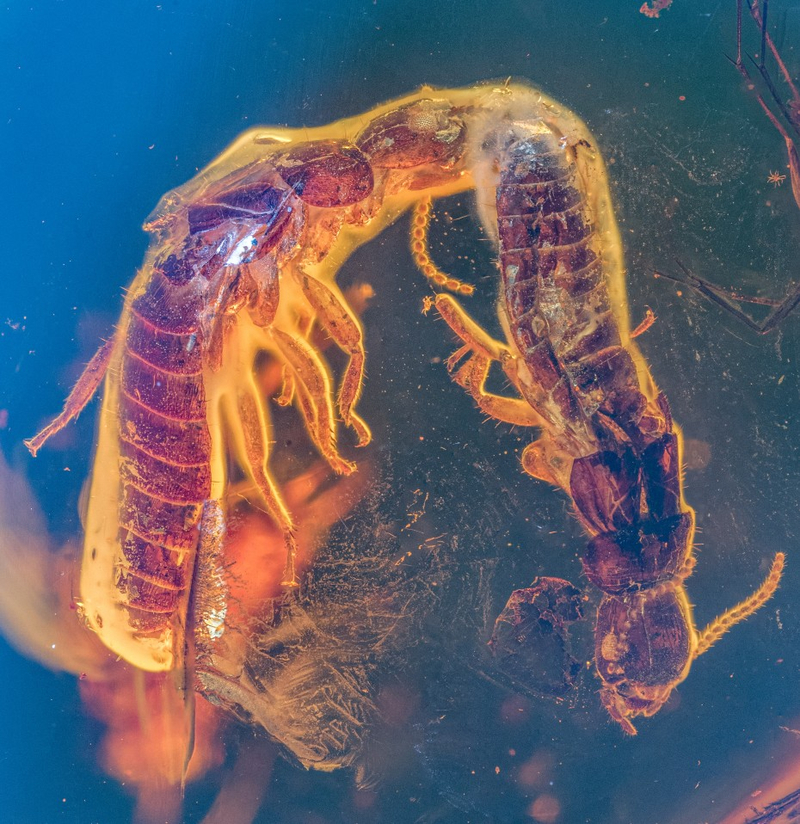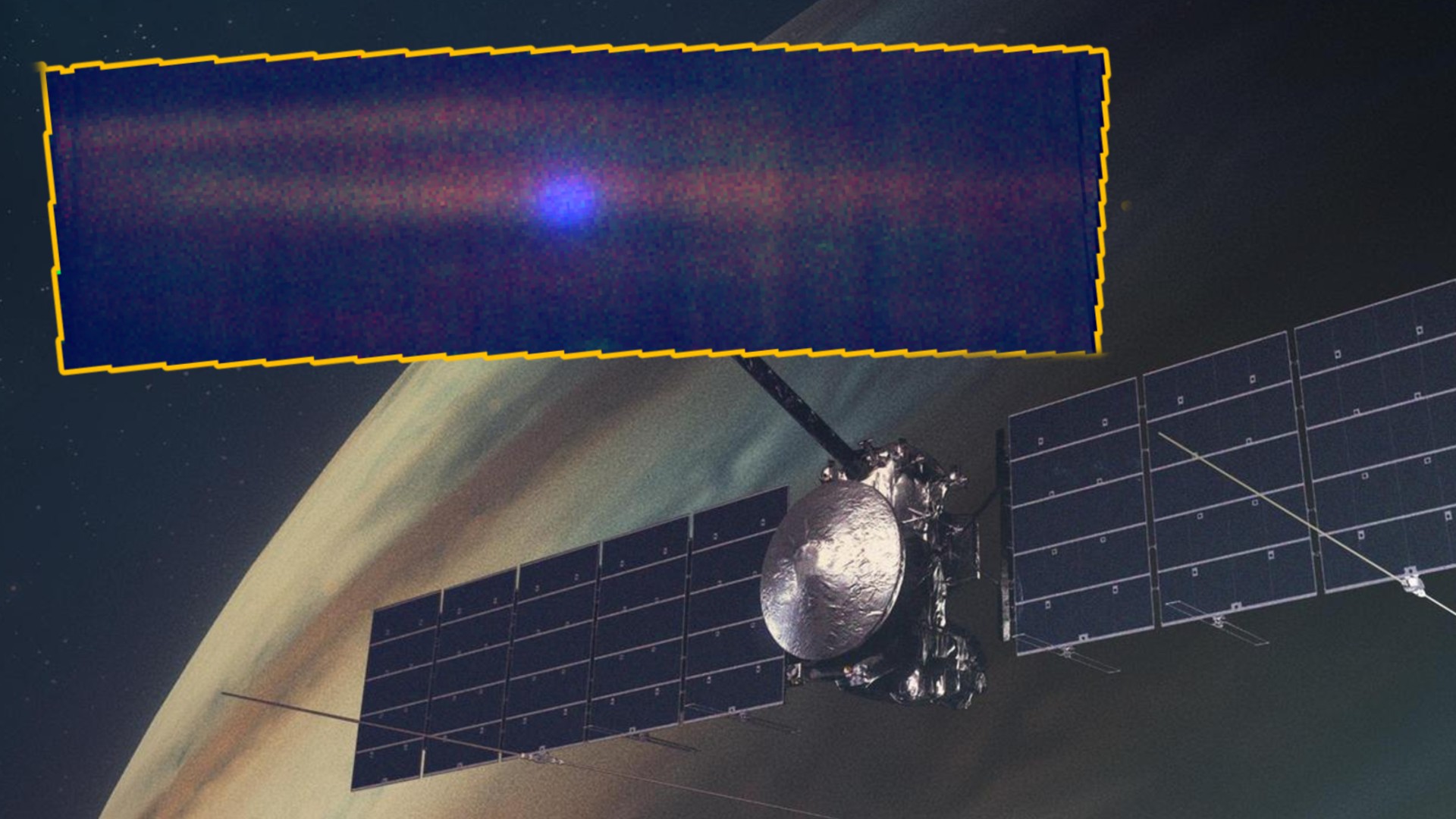Courtship cut short for termites trapped in 38 million-year-old amber fossil
Amber containing a pair of termites pulled from a Russian mine reveals their mating behavior hasn't changed for tens of millions of years.

A rare piece of amber has preserved the mating behavior of 38 million-year-old termites, researchers have revealed.
The amber, or fossilized tree resin, holds the oldest and only described pair of Electrotermes affinis termites and reveals that these long-extinct insects likely engaged in the same mating behavior as termites that are alive today, according to a new study, published March 5 in the journal PNAS.
Co-author Aleš Buček, head of the Laboratory of Insect Symbiosis at the Czech Academy of Sciences, saw the amber in an online fossil shop and immediately recognized its significance, according to a statement released by the Okinawa Institute of Science and Technology in Japan.
"Termite fossils are very common, but this piece was unique because it contains a pair," Buček said. "I have seen hundreds of fossils with termites enclosed, but never a pair."
Related: Bloom entombed in amber is the largest fossilized flower ever found
In this case, the fossil was Eocene Baltic amber from a mine in Yantarny, Kaliningrad, which is part of Russia. Bubbles in the amber obscured the posterior part of the termites' abdomens, so the team used a 3D imaging technique called X-ray microtomography to look inside the fossil and identify them as male and female.
The two termites were preserved side by side, with the female's mouth touching the tip of the male's abdomen. Close abdomen contact is part of a common mating behavior in living termites called tandem running. Mating pairs use tandem running to stay together while looking for nest sites. However, living termites run in a straight line, with one termite following directly behind the other, so the side-by-side position of the fossilized pair would be unusual for this behavior.
Get the world’s most fascinating discoveries delivered straight to your inbox.
To test whether the ancient termites could have shifted position as they got stuck in the tree resin, the team tried to recreate the pair's final moments in a lab with living termites. The researchers caught mating pairs of Formosan subterranean termites (Coptotermes formosanus) at the Okinawa Institute of Science and Technology — they are an invasive species in Japan — and made them walk onto sticky traps.
In the test, the leading termite got stuck first, and the follower kept going, shifting around. In some cases, the pair ended up in a side-by-side position like the fossilized termites, suggesting that the ancient termites were probably tandem running in a straight line before making contact with the tree resin.
"If a pair encounters a predator, they usually escape but I think on a sticky surface they do not realize the danger and get trapped," lead author Nobuaki Mizumoto, an assistant professor of entomology and plant pathology at Auburn University in Alabama, said in the statement.

Patrick Pester is the trending news writer at Live Science. His work has appeared on other science websites, such as BBC Science Focus and Scientific American. Patrick retrained as a journalist after spending his early career working in zoos and wildlife conservation. He was awarded the Master's Excellence Scholarship to study at Cardiff University where he completed a master's degree in international journalism. He also has a second master's degree in biodiversity, evolution and conservation in action from Middlesex University London. When he isn't writing news, Patrick investigates the sale of human remains.



